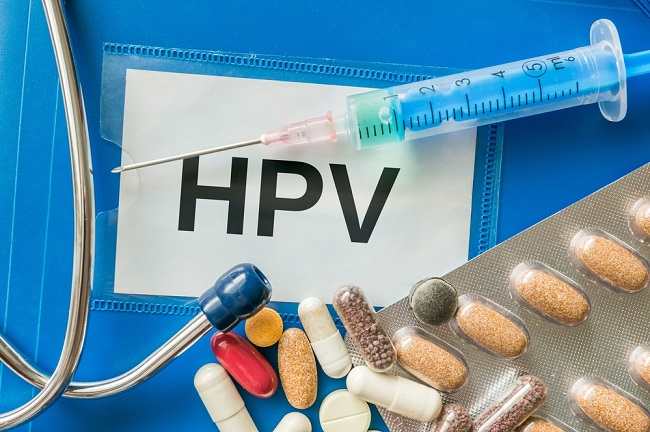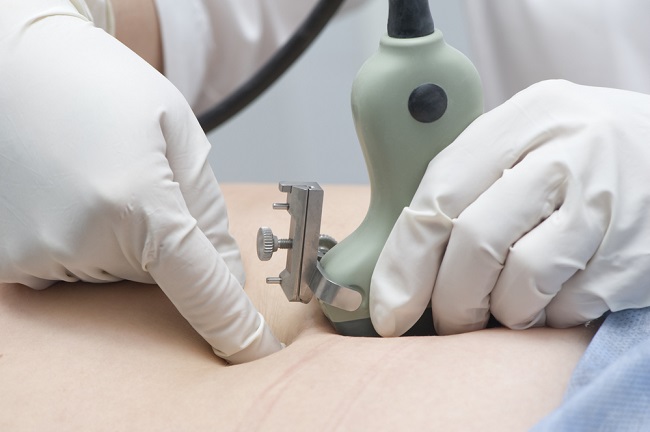Protein C deficiency is a condition when the body lacks protein C. This condition can causes blood to clot more easily, so thatcan increase the risk of blockages in blood vessels.
Protein C is a natural blood thinner in the body. Protein C is usually found in the blood in an inactive state and is only active when the body needs it.

Together with other proteins in the blood, protein C regulates the balance of blood clotting, so that the blood clotting process can be controlled and blood clots do not form. In addition, protein C is also thought to have a function to prevent inflammation and protect cells from damage (cytoprotective).
Blood clots that form due to protein C deficiency often occur in slow-flowing blood vessels, namely veins. This condition causes people with protein C deficiency to be more susceptible to disease deep vein thrombosis (DVT).
Types of Protein C . Deficiency
There are two types of protein C deficiency, namely:
- Type 1Type 1 protein C deficiency occurs due to a lack of protein C in the blood.
- Type 2Type 2 protein C deficiency occurs because the activity or work of protein C is not optimal in the blood clotting system, although the amount is still normal. Compared to type 1, type 2 deficiency is less common.
Causes of Protein C Deficiency
Protein C deficiency occurs due to genetic changes or mutations that cause abnormal protein C production and function. These genetic mutations can be passed from parents to children.
Therefore, someone who has a family history of protein C deficiency will be more at risk of suffering from this disease. However, this genetic mutation can also occur by itself, it's just that the cases are less common than inherited genetic mutations.
Usually, someone who does not have a family history of protein C deficiency can develop this disease if they have trigger factors, such as:
- Suffer from vitamin K deficiency
- Suffering from heart failure
- Have a severe infection, such as meningococcal septicemia
- Have cancer that has spread (metastasized)
- Having DIC (disseminated intravascular coagulation), which is a condition in which there are blood clots that spread throughout the body and bleeding at the same time
- Undergoing chemotherapy
- Undergoing a bone marrow cell transplantstem cells)
- Taking blood-thinning medications, such as warfarin
Symptoms of Protein C Deficiency
Generally, protein C deficiency does not cause significant symptoms (asymptomatic) until blood clots occur. However, when a blood clot has occurred, this condition can cause a variety of symptoms, including:
- Deep vein thrombosis (DVT)DVT, also known as deep vein thrombosis, is the formation of a blood clot in a deep vein. If a blood clot occurs in a vein in the leg, symptoms may include swelling, pain, discoloration, and hardening of the area of the leg where the blood clot is located.
- Pulmonary embolismPulmonary embolism occurs due to blood clots in the legs loose and then block the pulmonary arteries to cause lung tissue malfunction. Symptoms of a pulmonary embolism can include shortness of breath, chest pain, cough, fever, and dizziness.
- ThrombophlebitisThrombophlebitis occurs when a blood clot triggers inflammation in the clotted vein. Symptoms can include swelling, redness, pain, and a warm sensation in the area where the blood clot is forming.
- fulminant purpuraFulminant purpura occurs due to the formation of blood clots in the fine blood vessels throughout the body causing blockage of blood flow and tissue death (necrosis). A common symptom of fulminant purpura is dark purple bruising on the skin in areas where blood flow is blocked. Fulminant purpura usually occurs in children. When it occurs in a newborn, the condition is called neonatal fulminant purpura.
When to go to the doctor
Check with your doctor if you or your child experience any of the above symptoms, especially if the symptoms appear suddenly.
For pregnant women who have risk factors for protein C deficiency, it is necessary to check with a doctor regarding this condition regularly. It aims to plan a safe delivery process for the mother and fetus. The reason is, protein C deficiency can increase the risk of miscarriage in early and late pregnancy.
Diagnosis of Protein C Deficiency
The diagnosis of protein C deficiency is made based on the symptoms experienced, as well as the patient's and family's medical history. The diagnosis process is then followed by a thorough physical examination.
In order to confirm the diagnosis, generally follow-up examinations in the form of blood tests are carried out which include:
- Immunological testThis test is done to determine the amount of protein C in the blood by using certain antibody reactions. Generally, infants and toddlers have a lower protein C content than adults.
- C . protein function testThis test is done to check the activity of protein C in the blood.
Please note that the results of both tests may change if the patient is taking the blood thinner warfarin. Therefore, for patients who will undergo a blood test to detect protein C, will be asked to stop taking the drug for a few days.
In addition, the protein C detection test can also be performed several times to provide more accurate results.
Protein C . Deficiency Treatment
Treatment of protein C deficiency aims to treat blood clots that occur. Treatment can also be carried out as a preventive measure in patients who are at risk of developing blood clots, such as patients who have sepsis, are pregnant, or will undergo surgery.
To treat protein C deficiency, a consultant internal medicine doctor (KHOM) can prescribe anticoagulant drugs, such as:
- Heparin
- warfarin
- Edoxaban
- Enoxaparin
- Fondaparinux
- Dalteparin
- Dabigatran
- Rivaroxaban
- Apixaban
In addition to being given anticoagulant drugs, patients can also be given additional protein C to increase the protein C content in the blood. This additional protein C can be sourced from pure protein C in concentrate form or in combination with other proteins derived from blood transfusion types fresh frozen plasma (FFP).
For patients with neonatal fulminant purpura, immediate administration of protein C is required. Neonatal fulminant purpura patients will be given protein C in concentrate form to increase the protein C content in the blood.
After the protein C content returns to normal, the patient can be given anticoagulant drugs to prevent the occurrence of blood clots again. If needed, the patient can be given additional protein C again at any time. As a permanent solution, the patient can also undergo a liver transplant.
Complications of Protein C Deficiency
Some of the complications that may occur due to protein C deficiency are:
- Miscarriage in pregnant women
- Skin disorders due to warfarin use
- Serious health problems due to pulmonary embolism, such as death of lung tissue and cardiac arrest
- Neonatal fulminant purpura in infants
Prevention of Protein C Deficiency
In cases caused by genetic disorders, protein C deficiency cannot be completely prevented. However, the risk of blood clots due to the disease can be reduced. Some steps to reduce the risk of blood clots due to protein C deficiency are:
- Do exercise regularly.
- Drink enough water every day to avoid dehydration.
- Avoid standing or sitting for long periods of time
- Take medicines prescribed by a doctor regularly.
- Use socks (stockings) specifically recommended by doctors to prevent blood clots.
- Do regular medical check-ups, especially if there is a family member who has a history of protein C deficiency.









